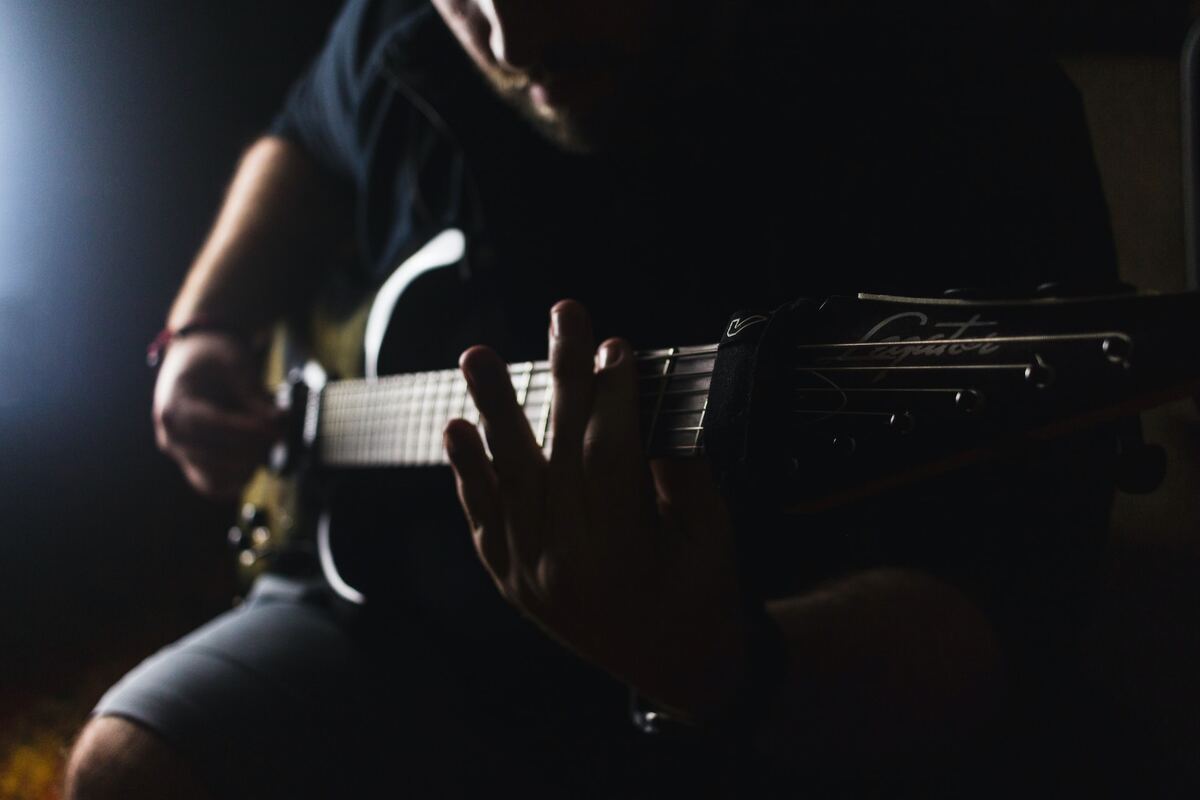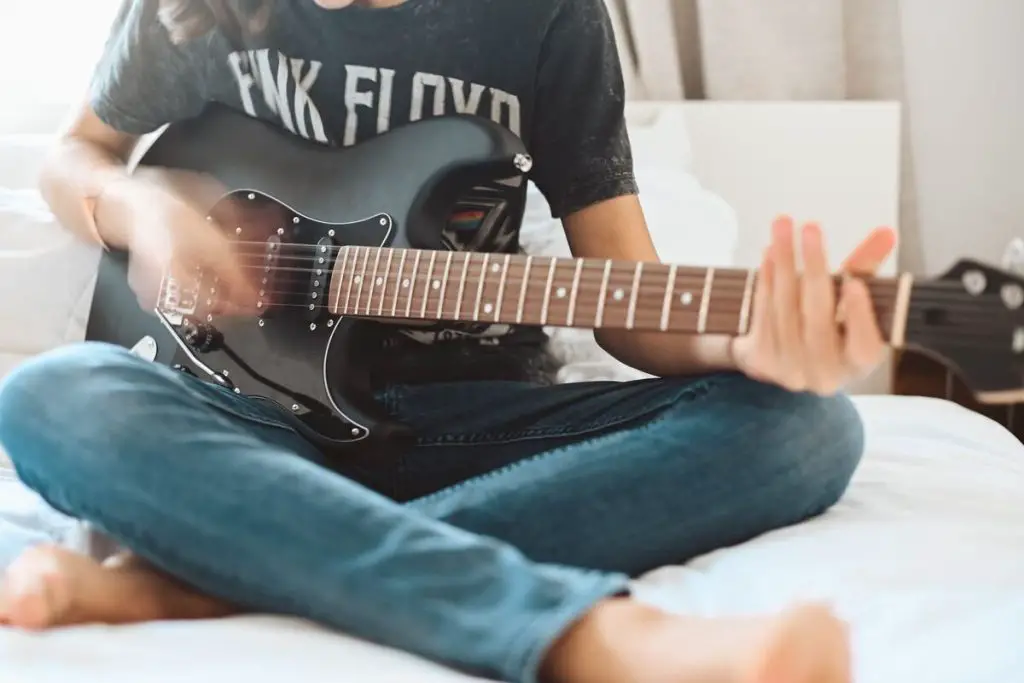Ever heard of the term ‘woodshedding’? No, it’s not about building a shed in your backyard to store your old drum kits. In a way, it is about creating space – space to grow, to learn, and to find your unique musical vibe. My buddy and I were just talking about this, how it seems like the art of woodshedding’s taken a backseat these days. Many newbies hitting the live scene, don’t bring that polished vibe.
Or worse, they lean heavily on tech to patch up their performance shortcomings. But let’s be honest here, all the auto-tune and effects in the world can’t disguise the gaps. The crowd can tell the difference. They don’t vibe the same way they would with a performer who’s truly honed their craft. And serious music heads, the real pros, know the true power of woodshedding. So what exactly is woodshedding?
What is woodshedding? Woodshedding in music refers to the dedicated and focused practice of a musical instrument or technique in isolation, typically done in a private and uninterrupted setting like a woodshed (hence the term).
What is woodshedding in music?
Woodshedding is that deep dive into practicing your instrument. It’s the committed musician’s way of getting all up in their craft, stripping it down to the core, and working out all the kinks. When you’re woodshedding, it’s just you, your music, and a whole lot of focus.

Imagine a guitarist, right? She’s working on this killer solo, but there’s a section that’s giving her a tough time. She doesn’t just breeze through it, nah, she zooms in. She dissects that tricky section, note by note, riff by riff, until she’s got it nailed. She’s in her own world, her own musical woodshed, chiseling away at the rough edges till she shapes them into a smooth groove.
And hey, it’s not just me who’s big on woodshedding. Top musicians across the globe swear by it. Take John Coltrane, a legend of the saxophone. The dude was known for his insane woodshedding sessions. He’d practice for hours on end, exploring scales and patterns until he could play ’em inside out, upside down, and every way in between. That’s the power of woodshedding!
AKAI Professional MPK Mini MK3

AKAI Professional MPK Mini MK3
My first encounter with woodshedding
Let’s rewind to my early days as a budding musician. Picture this – me, a shiny new electric guitar in hand, full of dreams and rock n’ roll. There was this particular song I was head over heels for and my goal was to play that song and make my guitar sing those very same notes. But there was this crazy-fast riff right in the middle that seemed like an insurmountable wall.
No matter how much I tried, I just couldn’t nail it. Then, a more seasoned musician buddy of mine introduced me to woodshedding. “Isolate that riff,” he said, “Work on it, bit by bit, till you get it right.” So that’s what I did. I retreated into my own musical cocoon, me, my guitar, and that elusive riff.
Hours turned into days, days into weeks. I worked on each note, each transition, and each tiny movement of my fingers. And one day, out of the blue, I got it. I played the riff, start to finish, with no stumbles. I had climbed that wall. That’s woodshedding for you, folks – it’s tough, it’s demanding, but oh boy, the feeling when you finally get it right? Pure magic!
Why is woodshedding important for musicians?
Woodshedding isn’t just about mastering the technical aspects of a musical piece; it’s about tapping into the emotional core of the music and delivering a performance that resonates with listeners. Through intense and focused practice, woodshedding allows musicians to connect with their audience on a profound level.
Muscle memory frees up mental space, allowing performers to focus on expression and emotion rather than getting caught up in technicalities.
When musicians commit to a piece of music, something magical happens. Muscle memory frees up mental space, allowing performers to focus on expression and emotion rather than getting caught up in technicalities. With each note flowing effortlessly, they create an immersive experience for their audience.
Music has the power to tell stories and evoke emotions. Through woodshedding, musicians refine their ability to communicate and deliver a captivating narrative. They learn to breathe life into the music, weaving tales with their instruments or voices, leaving the audience mesmerized and captivated.
How can you make the most out of your woodshedding sessions?
Taking woodshedding seriously means treating it as a deliberate and focused endeavor. By setting goals, creating an optimal practice environment, utilizing deliberate practice techniques, and leveraging helpful tools, you can make the most of your woodshedding sessions and accelerate your growth as a musician.

- Setting clear goals and objectives: Before diving into woodshedding, it’s crucial to set clear goals and objectives. Define what you want to achieve with each practice session. Whether it’s perfecting a challenging passage or enhancing your overall musicality, having a clear focus will make your woodshedding sessions more productive.
- Creating a focused practice environment: To optimize your woodshedding sessions, create a practice environment that minimizes distractions and maximizes focus. Eliminate interruptions, find a quiet space, and ensure you have the necessary tools and equipment at hand. By immersing yourself in a dedicated practice environment, you can fully concentrate on honing your skills.
- Incorporating deliberate practice techniques: Deliberate practice involves intentionally targeting weak areas and working on them systematically. Break down complex passages into smaller segments and practice them repetitively. Gradually increase the tempo and difficulty level as you gain proficiency. Embrace the process of gradual improvement and celebrate small victories along the way.
- Leveraging tools and resources: Various tools and resources can enhance your woodshedding journey. Metronomes help you develop a solid sense of rhythm while recording devices allow you to evaluate your progress objectively. Experiment with different resources like play-along tracks, backing tracks, or online tutorials to broaden your horizons and keep your practice sessions engaging.
| Dos | Don’ts |
|---|---|
| Do set clear goals. | Don’t be vague about your practice. |
| Do break down complex tasks. | Don’t tackle too much at once. |
| Do maintain consistency. | Don’t be sporadic with your practice. |
| Do celebrate your progress. | Don’t be too hard on yourself. |
Advantages and disadvantages of woodshedding
Like every other practice method, woodshedding got its ups and downs. Let’s dive into the pros and cons of woodshedding.
Advantages of woodshedding
Woodshedding offers a myriad of advantages for musicians looking to enhance their skills and artistic expression. By committing to intense and focused practice sessions, musicians can reap the following benefits:
- Improved technical precision: Woodshedding enables musicians to refine their technique, leading to greater precision in their performances.
- Enhanced artistic expression: By developing muscle memory, musicians can channel their emotions and communicate their artistic vision more effectively.
- Increased stage presence: Woodshedding builds confidence, allowing musicians to exude charisma and engage their audience on a deeper level.
Disadvantages of woodshedding
While woodshedding offers significant advantages, it’s essential to be aware of potential drawbacks:
- Potential burnout: Intense practice sessions may lead to physical and mental exhaustion if not balanced with adequate rest and self-care.
- Risk of tunnel vision: Excessive focus on woodshedding may narrow musicians’ perspectives, limiting their exploration of different musical styles and genres.
- Diminished spontaneity: Overreliance on muscle memory can sometimes hinder the ability to adapt and improvise in live performances.
If you want even more great tips and information, check out the video below.
Frequently asked questions (FAQs)
Can woodshedding benefit musicians of all skill levels?
Absolutely! Woodshedding is beneficial for musicians at any skill level. Whether you’re a beginner looking to build a solid foundation or an advanced musician aiming for mastery, woodshedding helps develop technique, expression, and confidence.
How much time should I dedicate to woodshedding?
The amount of time you dedicate to woodshedding depends on your goals and commitments. It’s recommended to establish a consistent practice routine and aim for quality over quantity. Start with shorter sessions and gradually increase the duration as you build stamina and focus.
Can woodshedding be applied to different musical instruments?
Yes, woodshedding can be applied to a wide range of musical instruments. Whether you play guitar, piano, violin, or any other instrument, the principles of intense and focused practice can be adapted to suit the specific technical demands of your instrument.
Conclusion
Woodshedding is like a secret path that leads to musical greatness. By embracing the power of intense and focused practice, musicians can unlock their true potential and establish deep connections with their audience. Did I cover everything you wanted to know? Let me know in the comments section below. I read and reply to every comment. If you found this article helpful, share it with a friend, and check out my full blog for more tips and tricks on music production.















